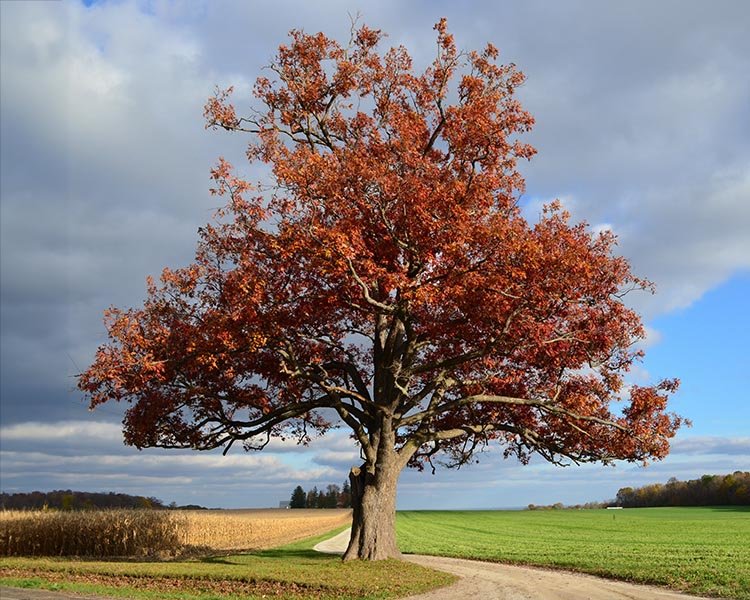Oak - Red
(2-3’ bareroot) Quercus rubra - Also known as the eastern red oak or the gray oak, it typically reaches 50-90 feet. This tree grows rapidly and has a long lifespan under optimal conditions, with potential growth of 15-20 feet in just 10 years. It features a broad, often irregular crown. It thrives in slightly acidic soils but is adaptable to a variety of soil types, including loamy, moist, sandy, well-drained, and clay soils. Red oaks generally start producing a significant number of acorns around 40 years of age. They are favored by lumbermen and landscapers for their large, single trunk and upright, spreading branches. Acorns are highly favored by blue jays, wild turkeys, squirrels, small rodents, white-tailed deer, raccoons, and black bears. Deer also browse the buds and twigs during winter.
Zones 4-9
(2-3’ bareroot) Quercus rubra - Also known as the eastern red oak or the gray oak, it typically reaches 50-90 feet. This tree grows rapidly and has a long lifespan under optimal conditions, with potential growth of 15-20 feet in just 10 years. It features a broad, often irregular crown. It thrives in slightly acidic soils but is adaptable to a variety of soil types, including loamy, moist, sandy, well-drained, and clay soils. Red oaks generally start producing a significant number of acorns around 40 years of age. They are favored by lumbermen and landscapers for their large, single trunk and upright, spreading branches. Acorns are highly favored by blue jays, wild turkeys, squirrels, small rodents, white-tailed deer, raccoons, and black bears. Deer also browse the buds and twigs during winter.
Zones 4-9
(2-3’ bareroot) Quercus rubra - Also known as the eastern red oak or the gray oak, it typically reaches 50-90 feet. This tree grows rapidly and has a long lifespan under optimal conditions, with potential growth of 15-20 feet in just 10 years. It features a broad, often irregular crown. It thrives in slightly acidic soils but is adaptable to a variety of soil types, including loamy, moist, sandy, well-drained, and clay soils. Red oaks generally start producing a significant number of acorns around 40 years of age. They are favored by lumbermen and landscapers for their large, single trunk and upright, spreading branches. Acorns are highly favored by blue jays, wild turkeys, squirrels, small rodents, white-tailed deer, raccoons, and black bears. Deer also browse the buds and twigs during winter.
Zones 4-9

